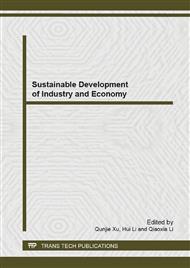p.870
p.876
p.883
p.887
p.893
p.898
p.903
p.908
p.914
Shanghai's CO2 Emissions and Policy Implication for Low Carbon Construction
Abstract:
Cities are the main contributors of anthropogenic greenhouse gases (GHGs) emissions. Comprehensive countermeasures are needed in cities to mitigate GHGs emissions. The aim of this paper is to study the results that Shanghai achieved in carbon mitigation by comprehensive green measures. It demonstrated that Shanghai has made significant progress in carbon emission reduction through technological innovation, industrial structure adjustment, and energy efficiency improvement in recent years. The results showed that Shanghais energy related CO2 intensity reduced to 1.14 t/104 yuan in 2010, owing to adjustments in energy structure and industry structure. It also showed that Shanghai had made abundant reduction in carbon emissions in the past few years. 9.2 million tons of CO2 reductions were obtained in industry, transportation, and building in the city level. Among them, reductions in industrial sector and transportation were the major contributors. Further efforts should be taken to realize a low carbon future.
Info:
Periodical:
Pages:
893-897
Citation:
Online since:
December 2013
Authors:
Keywords:
Price:
Сopyright:
© 2014 Trans Tech Publications Ltd. All Rights Reserved
Share:
Citation:


